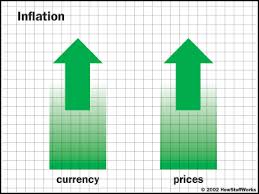
 Nigeria has recorded sustained increase in annual movement in external reserves and Oil Prices as inflation rate rose to 17.85 per cent in September this year against 17.61 per cent reported in August 2016.
Nigeria has recorded sustained increase in annual movement in external reserves and Oil Prices as inflation rate rose to 17.85 per cent in September this year against 17.61 per cent reported in August 2016.
The rate was the highest since 20 percent recorded in February 2009. However, monthly increase in composite consumer price slowed for the fourth consecutive time to 0.82 per cent in September from 1.01 per cent in the preceding month.
The current Increase in general price level was mainly due to supply factors such as impact of higher foreign exchange rate on consumer goods and services. Core inflation rate increased to 17.70 per cent in September higher than 17.21 per cent in August while food inflation rate rose to 16.62 per cent in September against 16.43 per cent in the previous month.
Price index of transportation, rose further by 18.07 per cent in September from 17.97 per cent in August; clothing & footwear, rose by 17.18 per cent (from 16.67 per cent recorded in the last month while housing, water, electricity, gas and other fuel, climbed by 26.31 per cent from 25.94 per cent. In the monetary sector, Depository Corporations Survey for September showed that broad money supply increased month-on-month (m-o-m) by 2.25 per cent to N22.13 trillion following a 2.62 per cent growth in net domestic assets to N14.39 trillion, accompanied by a 1.56 per cent rise in net foreign assets to N7.74 trillion.
The boost in broad money supply was mostly due to a 9.23 per cent month -on -month increase in demand deposits to N8.47 trillion coupled with a 7.88 per cent m-o-m increase in currency outside banks to N1.48 trillion.
On the asset side of the financial system balance sheet, credit to the government spiked m-o-m by 13.92 per cent to N3.75 trillion which partly offset a 0.32 per cent m-o-m decline in credit to the private sector to N22.59 trillion. In the foreign sector, amid increased competition among crude oil exporters, Nigerian National Petroleum Corporation (NNPC) discounted the official selling price of 20 out of its 26 crude oil export grades by at least USD1/barrel in an effort to regain market share.
